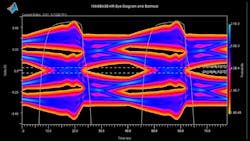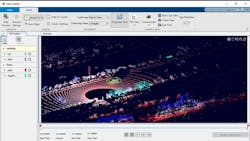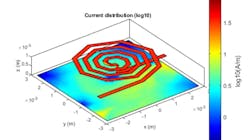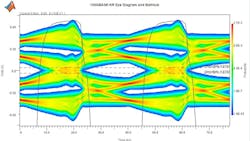MATLAB Gets PCB and LiDAR Enhancements
MathWorks tends to deliver regular updates each year, so the release of R2021b comes as no surprise. The list of changes and fixes is extensive with some major enhancements.
The Lidar Toolbox includes the interactive Lidar Viewer application that developers can use to visualize, analyze, and preprocess LiDAR point clouds (Fig. 1). It will work directly with Velodyne and IBEO LiDAR sensors. And it ties into MATLAB’s machine-learning (ML) support—data can be used to train detection, semantic segmentation, and classification ML models. This support includes deep-learning algorithms such as PointPillars, SqueezeSegV2, and PointNet++.
Simulink is part of the MathWorks toolset, and it’s often used in conjunction with MATLAB. The Simulink Code Inspector includes the Code Inspector contextual tab to check compatibility, inspect code, and view results directly in the model. Likewise, the Simulink Control Design support features Model Reference Adaptive Control (MRAC) algorithms that process control actions to make an uncertain control system track the behavior of a given reference plant model.
Two other toolboxes got the update treatment as well. The Symbolic Math Toolbox can now provide next-step suggestions in MATLAB Live Editor. The Wavelet Toolbox, which provides wavelet analysis to process and extract features for signals and images for AI workflows, now has a tunable Q-factor wavelet transform. There’s also online support for a wavelet signal denoiser, as well as C/C++ code generation capability.
Furthermore, there are two new toolboxes: the RF PCB Toolbox and the Signal Integrity Toolbox. The RF PCB Toolbox is designed to support electromagnetic analysis of printed circuit boards (Fig. 2). This includes visualization for high-speed and RF multi-layer PCBs. It targets developers of RF boards and modules as well as monolithic microwave integrated circuits (MMICs) and system-in-package (SIP) devices. The toolbox software is compatible with ODB++ and databases from Cadence Allegro, Mentor Expedition, Altium, and Zuken.
The Signal Integrity Toolbox simulates and analyzes high-speed serial and parallel links (Fig. 3). It supports standard-compliant IBIS-AMI models, which can analyze equalization and clock recovery via statistical and time-domain simulations. Developers are able to specify the channel using multiport S-parameter data, IBIS, HSPICE, and analytical models.
The software can extract design metrics and provide waveform visualization. It’s possible to verify a channel’s compliance with industry standards including IEEE 802.3, OIF, PCIe, and DDR.
About the Author
William G. Wong
Senior Content Director - Electronic Design and Microwaves & RF
I am Editor of Electronic Design focusing on embedded, software, and systems. As Senior Content Director, I also manage Microwaves & RF and I work with a great team of editors to provide engineers, programmers, developers and technical managers with interesting and useful articles and videos on a regular basis. Check out our free newsletters to see the latest content.
You can send press releases for new products for possible coverage on the website. I am also interested in receiving contributed articles for publishing on our website. Use our template and send to me along with a signed release form.
Check out my blog, AltEmbedded on Electronic Design, as well as his latest articles on this site that are listed below.
You can visit my social media via these links:
- AltEmbedded on Electronic Design
- Bill Wong on Facebook
- @AltEmbedded on Twitter
- Bill Wong on LinkedIn
I earned a Bachelor of Electrical Engineering at the Georgia Institute of Technology and a Masters in Computer Science from Rutgers University. I still do a bit of programming using everything from C and C++ to Rust and Ada/SPARK. I do a bit of PHP programming for Drupal websites. I have posted a few Drupal modules.
I still get a hand on software and electronic hardware. Some of this can be found on our Kit Close-Up video series. You can also see me on many of our TechXchange Talk videos. I am interested in a range of projects from robotics to artificial intelligence.




